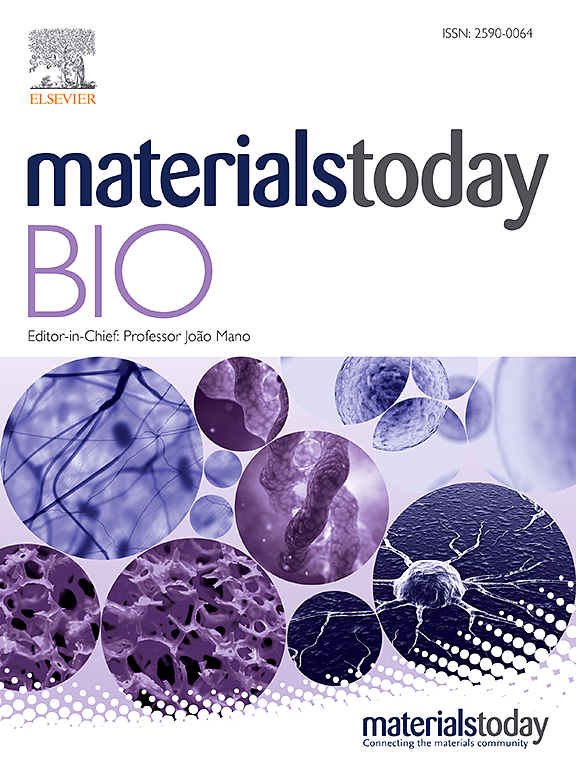Injectable composite microspheres/hydrogel membranes for Achilles tendon regeneration
IF 10.2
1区 医学
Q1 ENGINEERING, BIOMEDICAL
引用次数: 0
Abstract
Tendon injury is a common condition with potential for disability. Severe injuries such as tendon rupture often require surgical suturing to restore their structure and function. The healing process of tendons is a critical factor affecting clinical outcomes; however, their poor blood supply and low cellular density limit self-regeneration capabilities. This leads to insufficient quality and biomechanical properties of the repaired tendon, playing a significant role in the high rate of re-rupture in clinical practice. Tendon healing involves endogenous (tenocyte proliferation) and exogenous (fibroblast invasion) mechanisms. An imbalance between these two mechanisms often leads to postoperative adhesions, which significantly impacts clinical efficacy. Thus, this project aims to design an injectable, sustained-release methacryloyl gelatin (GelMA) hydrogel microsphere modified with Platelet-Derived Growth Factor-BB (PDGF-BB) and fibronectin (Fn), in conjunction with an anti-adhesion hyaluronic acid methacrylate (HAMA) hydrogel membrane. This combination is designed to promote tendon healing and prevent adhesions. This study will utilize an Achilles tendon rupture animal model to assess the effectiveness of composite microspheres/hydrogel membranes in enhancing tendon repair and preventing adhesions, offering insights for new clinical strategies in tendon rupture treatment.

可注射复合微球/水凝胶膜用于跟腱再生
肌腱损伤是一种常见的疾病,有可能导致残疾。严重的损伤,如肌腱断裂,通常需要手术缝合来恢复其结构和功能。肌腱的愈合过程是影响临床结果的关键因素;然而,它们的血液供应不足和细胞密度低限制了自我再生能力。这导致修复后的肌腱质量和生物力学性能不足,在临床实践中是高再断裂率的重要原因。肌腱愈合涉及内源性(肌腱细胞增殖)和外源性(成纤维细胞侵袭)机制。这两种机制的失衡往往导致术后粘连,严重影响临床疗效。因此,该项目旨在设计一种可注射的、缓释的甲基丙烯酰明胶(GelMA)水凝胶微球,该微球由血小板衍生生长因子- bb (PDGF-BB)和纤维连接蛋白(Fn)修饰,并结合抗粘附透明质酸甲基丙烯酸酯(HAMA)水凝胶膜。这种组合旨在促进肌腱愈合并防止粘连。本研究将利用跟腱断裂动物模型来评估复合微球/水凝胶膜在增强跟腱修复和预防粘连方面的有效性,为跟腱断裂治疗的新临床策略提供见解。
本文章由计算机程序翻译,如有差异,请以英文原文为准。
求助全文
约1分钟内获得全文
求助全文
来源期刊

Materials Today Bio
Multiple-
CiteScore
8.30
自引率
4.90%
发文量
303
审稿时长
30 days
期刊介绍:
Materials Today Bio is a multidisciplinary journal that specializes in the intersection between biology and materials science, chemistry, physics, engineering, and medicine. It covers various aspects such as the design and assembly of new structures, their interaction with biological systems, functionalization, bioimaging, therapies, and diagnostics in healthcare. The journal aims to showcase the most significant advancements and discoveries in this field. As part of the Materials Today family, Materials Today Bio provides rigorous peer review, quick decision-making, and high visibility for authors. It is indexed in Scopus, PubMed Central, Emerging Sources, Citation Index (ESCI), and Directory of Open Access Journals (DOAJ).
 求助内容:
求助内容: 应助结果提醒方式:
应助结果提醒方式:


